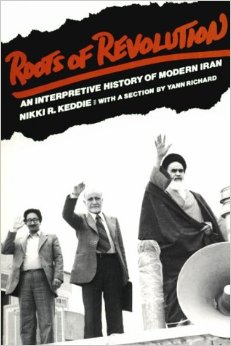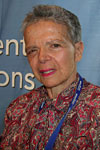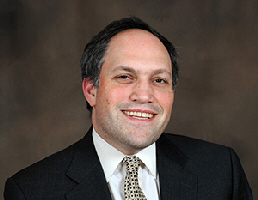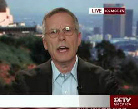Modern Iran:
Roots and Results of Revolution
by Nikki R. Keddie
New Haven: Yale University Press, 2003.
400 pp.
Reviewed by Michael Rubin
Middle East Quarterly
Smmer 2004 Volume XI: Number 3
University of California historian Keddie published the first version of this book, titled Roots of Revolution, in 1981, and a generation of students has read her work in an effort to make sense of revolution in Iran. With Modern Iran, Keddie updates her study to take into account the Islamic Republic's first quarter century.
Modern Iran begins with a brief sweep of Iranian history. Subsequent chapters examine the rise of the Qajar dynasty in the nineteenth century; the period of upheaval and constitutional revolution at the turn of the century; and then the development of dictatorship in the twentieth century.
Keddie's narrative is lucid and generally accurate. Her account of nineteenth-century Iran provides a good, accessible guide for the non-expert, curious about modern Iran's early history. However, she replicates mistakes made in the original, as though two decades had not passed. For example, she says the Iranian telegraph system followed the British-Indian line through Iran when, in reality, the first Iranian lines predated the British effort by a decade. She repeats her assertions trumpeting the importance of the late nineteenth-century pan-Islamist reformer Jamal ad-Din "al-Afghani," without mentioning the dispute among historians over his importance.
Omission and bias then handicap the narrative as Keddie addresses events during her lifetime, that is from the 1950s on.
Keddie's failure to address the Cold War context undercuts her sympathetic analysis of Prime Minister Mohammad Mossadegh's 1951 oil industry nationalization and also her condemnation of the U.S.- supported coup two years later, which unseated Mossadegh. She glosses over the Soviet occupation of northwestern Iran and ignores Mossadegh's flirtation with the former Soviet Union and his encouragement of mob violence.
Keddie's treatment of the Islamic revolution is egregious.
As Ayatollah Ruhollah Khomeini consolidated power, his militias executed hundreds of officials and intellectuals while Iranian newspapers carried photos of their corpses. These atrocities merit a mere four sentences [!!!].
Keddie presents the multi-billion dollar Foundation of the Dispossessed, formed from the confiscated fortunes of the Shah's family and many supporters, as an economic engine akin to the Peace Corps, never mentioning its corruption or its crushing of labor unions. Keddie also ignores the foundation's role in financing Hizbullah.
Much of her political analysis is wrong-headed, even dishonest.
She terms President Ali Akbar Hashemi Rafsanjani (1989-97) a pragmatist who sought to promote technocrats and calls his five-year economic plans "successful," despite the brain drain, unemployment, and corruption that characterized his administration.
She also omits mention of Rafsanjani's role in Iran's covert nuclear program or his threatened first use of an atomic bomb against Israel.
She is likewise sympathetic to current "reformist" president Mohammad Khatami despite his failure to implement any substantive reform and his silence in the wake of crackdowns against democrats and dissidents [during the uprising of the students in July 2009].
When Keddie speaks of "new independence for girls and women," she forgets to note that, unlike the women in other Middle Eastern countries, those in Iran are fighting to regain rights they once had [under the Shah].
Keddie concludes by juxtaposing Iran's recent "pragmatic and realistic" policy with the "ideological and threatening" stance of the United States.
The increasingly frequent anti-Islamic Republic demonstrations taking place in Iran, coupled with voter turnout of less than 10 percent in many provinces in this year's parliamentary elections, suggests that many Iranians have a different view of the results of the Islamic Revolution.
Nikki Keddie:
"I was also heavily involved in politics and, like many leftist students at that time, joined the Communist Party."









